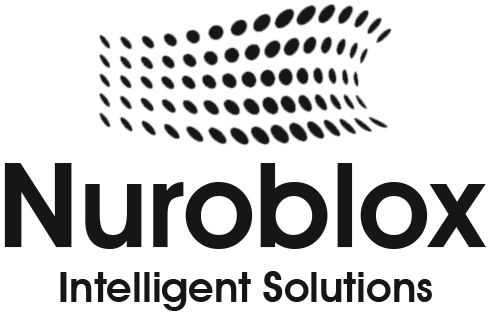Why Privacy-First AI Is the Future of Automation
As businesses rush to automate more processes with AI, one critical issue continues to emerge- data privacy. From customer onboarding and document processing to internal workflows and decision-making, AI is now deeply integrated into core operations and it’s handling more sensitive data than ever before.
But traditional automation tools weren’t built for today’s privacy-first world. They often rely on external APIs, public cloud infrastructure, or black-box models that offer little transparency or control. That’s why a new wave of solutions is emerging- privacy-first AI.
These systems are designed to automate intelligently, without exposing confidential data, breaching compliance, or compromising visibility into decision-making processes. For enterprises in finance, healthcare, legal, and other regulated sectors, this approach isn’t just a best practice; it’s the only path forward.
In this blog, we’ll explore what privacy-first AI really means, why it matters now more than ever, and how businesses can use it to automate confidently in a world of rising regulation and growing digital risk.
The Risks of Traditional AI Automation
Traditional AI automation has made it easier for businesses to streamline tasks, but it often comes with serious privacy and security concerns. Many legacy AI systems process sensitive data – such as personal information, financial records, or internal business documents – through public cloud models or external APIs.
This creates vulnerabilities, as companies lose control over where data is stored and how it’s being used. In many cases, these systems operate like black boxes, offering little transparency into how decisions are made, which can be especially problematic for organizations that must meet strict regulatory requirements like GDPR, HIPAA, or CCPA.
Without built-in privacy safeguards, traditional AI tools may inadvertently expose data to unauthorized access or create audit and compliance gaps. Worse, teams may adopt AI tools without proper IT oversight, leading to “shadow AI” – unvetted tools that increase the risk of data breaches or noncompliance.
Additionally, some AI models continue learning from user data in real time, resulting in unintended data drift or model bias, which further undermines reliability and accountability. In short, while traditional AI automation promises efficiency, it often sacrifices data security – a trade-off that modern businesses can no longer afford to make.
What Makes AI Privacy-First?
A privacy-first AI approach is not just about protecting data – it’s about building automation systems with privacy, compliance, and control baked in from the start. Instead of bolting on security later, privacy-first AI is designed with safeguards at every level of the workflow.
Here’s what defines a truly privacy-first AI system-
1. Data Control Stays with the Enterprise
In privacy-first AI, your data never leaves your environment unless explicitly allowed. Whether deployed on-premises or in a secure private cloud, you maintain full control over where and how data is stored, processed, and accessed.
No third-party data training.
No silent uploads to vendor servers.
2. Encryption by Default
All data – whether at rest, in transit, or during processing – is encrypted using enterprise-grade standards. This ensures that even if data is intercepted or accessed, it remains protected from unauthorized users.
3. Transparent & Explainable AI Models
Privacy-first AI doesn’t operate like a black box. It emphasizes explainability, so your teams can understand how outputs are generated, how decisions are made, and how models evolve over time. This is essential for auditability and regulatory compliance.
4. Role-Based Access & Governance
Only the right people should have access to sensitive information or automation tasks. Privacy-first AI includes built-in access controls, logging, and usage monitoring to track who interacts with what – and when.
5. Privacy by Design Architecture
From data ingestion to output, privacy-first AI platforms are built with minimized data exposure, purpose limitation, and secure integrations in mind. This aligns closely with principles laid out in GDPR and other global frameworks.
6. Optional Model Isolation or On-Prem Deployment
For industries dealing with highly sensitive or regulated data, privacy-first AI allows for isolated or containerized model deployment, ensuring that no external sharing or cross-client data learning occurs, ever.
7. Compliance Ready Capabilities
Whether it’s automated redaction, consent management, or audit logs, privacy-first AI tools are designed to make regulatory compliance easier, not harder.
What makes AI “privacy-first” is not just a feature, it’s a foundational shift in how automation is designed, delivered, and governed. It empowers businesses to innovate with AI confidently, without risking data exposure, compliance gaps, or customer trust.
Why Privacy-First AI Matters for Businesses
As AI becomes more integrated into business operations, from finance to HR to customer support, ensuring that automation respects privacy is no longer optional. For companies operating in regulated industries or handling sensitive information, a privacy-first approach to AI is essential not only to stay compliant but also to build trust, reduce risk, and enable long term scalability.
Here’s why privacy-first AI is especially important for modern businesses-
- Regulatory Compliance Made Easier
With global laws like GDPR, HIPAA, CCPA, and PCI-DSS becoming stricter, privacy-first AI platforms are designed to meet these requirements from day one. They offer built-in features like consent tracking, audit logs, and data minimization, helping businesses stay compliant without constant manual oversight. - Builds Customer and Partner Trust
Customers, clients, and partners are more aware than ever of how their data is used. AI that prioritizes privacy shows your commitment to data protection, strengthening relationships and brand reputation in competitive markets. - Prevents Costly Data Breaches and Fines
Mishandled data can lead to massive fines, legal exposure, and reputational harm. Privacy-first AI reduces the risk of leaks and unauthorized access through encryption, role based access, and secure data handling practices. - Enables Secure Internal Automation
Many companies hesitate to automate sensitive workflows, such as payroll, contracts, or legal reviews, due to data privacy concerns. Privacy-first AI makes it possible to safely automate even high risk internal processes. - Future Proof Your AI Strategy
As AI governance frameworks evolve, businesses need automation tools that can adapt. Privacy-first AI platforms are built with flexible compliance controls, making them more adaptable to future rules and global data standards.
Benefits of Privacy-First Automation
Privacy-first automation isn’t just about compliance, it’s about building smarter, safer, and more sustainable AI systems. By designing automation workflows that prioritize data protection and control, organizations gain a strategic advantage across operations, risk management, and customer trust.
Here are the key benefits of adopting a privacy-first automation approach-
- Enhanced Data Security
All sensitive data is encrypted, controlled, and never exposed to third parties without permission, reducing the risk of leaks or breaches. - Easier Regulatory Compliance
Privacy-first platforms often include built-in support for GDPR, HIPAA, CCPA, and other standards, simplifying audits and legal reporting. - Safer Internal Workflow Automation
Enables secure automation of internal processes like HR approvals, finance tasks, and legal document handling areas traditionally held back due to privacy concerns. - Greater Control and Transparency
Organizations maintain full visibility over how data is processed, where it’s stored, and how AI models make decisions. - Future Ready Automation
As privacy laws evolve, privacy-first tools can adapt more easily with modular governance, configurable data rules, and customizable retention policies. - Increased Trust Among Stakeholders
Customers, employees, and partners are more likely to engage when they know their data is handled responsibly and transparently.
Use Cases Across Industries
Privacy-first AI isn’t just a buzzword, it’s becoming a critical enabler of secure, compliant automation across a wide range of industries. As organizations look to accelerate digital transformation without compromising on data protection, privacy-first AI unlocks new opportunities to automate processes that were once considered too sensitive or risky.
Here are some powerful real world use cases by industry-
Healthcare
- AI-Powered Patient Data Processing– Automate intake forms, diagnostic reports, and treatment approvals while ensuring full compliance with HIPAA and protecting patient confidentiality.
- Medical Coding & Billing– Use private AI agents to classify procedures and generate claims without exposing sensitive health information to public models.
Finance & Banking
- KYC and AML Automation- Streamline compliance checks and identity verification using secure AI workflows that retain full audit trails and meet GDPR and financial regulations.
- Fraud Detection & Risk Analysis– Run AI models on sensitive transaction data within a private environment to detect fraud patterns without data exposure.
Legal & Compliance
- Contract Review & Redaction– Use AI to automate legal document analysis while preserving confidentiality and preventing unauthorized data leakage.
- Policy Enforcement Workflows– Trigger automated actions based on compliance rule checks, securely logged and traceable.
Enterprises (HR, IT, Operations)
- Employee Onboarding & Access Approvals– Automate internal approvals, document processing, and access rights with privacy-first AI, keeping HR data protected.
- IT Service Desk Automation– AI agents handle repetitive IT tasks (like ticket triage or password resets) within a secure, internal system.
Supply Chain & Logistics
- Private AI for Vendor & Invoice Management– Automate invoice processing, contract validation, and vendor onboarding while protecting sensitive business terms.
- Logistics Optimization– Use AI to automate and optimize route planning and fleet tracking without sending proprietary logistics data to the cloud.
Government & Public Sector
- Secure Document Processing & Case Management– Use AI to automate paperwork heavy processes in law enforcement, courts, or public benefit systems, with strict privacy and control over sensitive citizen data.
Privacy-first AI makes it possible to bring automation into high stakes environments where trust, control, and compliance are non-negotiable. As industries modernize, those that prioritize privacy will not only reduce risk but also gain a competitive edge through safer, smarter workflows.
Getting Started with Privacy-First AI
Adopting privacy-first AI doesn’t require rebuilding your entire tech stack. It’s about choosing tools, processes, and partners that prioritize data protection, control, and compliance from day one. Whether you’re automating internal workflows or customer facing operations, here’s how to begin your transition to privacy-first AI-
1. Audit Your Current Automation Stack
Start by identifying where sensitive data is used in your current AI or automation tools. Ask-
- Are these tools hosted on public clouds?
- Do vendors have access to your data?
- Can you audit how decisions are made?
Understanding your baseline helps you spot high risk areas and prioritize improvements.
2. Choose Privacy-First Platforms and Tools
Look for platforms that offer-
- On-premise or private cloud deployment
- End to end encryption
- Role based access controls
- GDPR/HIPAA/CCPA readiness
- Data isolation (no cross-client learning)
- No-code or low-code flexibility for secure workflow design
Evaluate vendors based on transparency, auditability, and security certifications.
3. Start with Internal, High Impact Use Cases
Begin with workflows that involve sensitive internal data, such as-
- HR onboarding and approvals
- Legal document automation
- IT operations and service requests
These are ideal for testing privacy-first AI in a controlled environment with measurable ROI.
4. Establish Privacy and Compliance Guardrails
Build clear internal policies and access rules for AI use. Implement logging, monitoring, and periodic reviews of AI workflows. Involve your IT, legal, and compliance teams early in the design process.
5. Scale Responsibly
Once you’ve validated privacy-first AI internally, expand into customer facing or regulated workflows. Look for platforms that support multi region data handling and evolving compliance requirements as your operations grow.
Privacy-first AI isn’t just about avoiding risk, it’s about creating responsible, resilient, and future ready automation. By starting with secure foundations today, your organization can move faster tomorrow, with confidence and control.
Conclusion
As AI continues to transform how businesses operate, one truth is becoming clear- automation without privacy is a risk, not a solution. From handling sensitive internal workflows to complying with strict regulations, enterprises can no longer afford to treat data protection as an afterthought.
Privacy-first AI offers a smarter path forward, one where innovation and integrity go hand in hand. It enables organizations to automate securely, build trust with customers, and stay ahead of evolving compliance demands, all while maintaining full control over their most valuable asset- data.
The shift has already begun. Businesses that embrace privacy first principles now will be better positioned to scale automation confidently, avoid regulatory pitfalls, and lead in an increasingly security conscious world.
Now is the time to rethink your AI strategy, not just for efficiency, but for accountability, transparency, and long term success.


